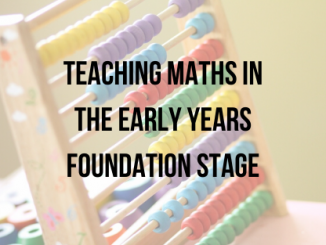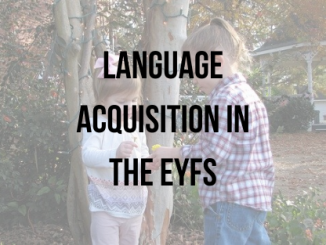Language is the best tool to help your child (ren) do well later in school and in life. Many children learn more than one language. Some learn more than two. Studies show that children with better language skills, in any language are more likely to:
- Develop their brain better
- Have stronger bonds with their parents
- Have better communication skills
- Be better prepared for school
Learning two languages can happen at any age. Learning a second language can happen at any age ( from birth or later). Studies show that the best time to learn two languages is before the age of seven (7). It is easier for children to learn two languages from birth.
Bilingualism is the ability to communicate fluently in a language other than your native language. As our world becomes more global we also become increasingly bilingual. Research has shown that approximately 20% is the US population is bilingual (Owens, 2012, pg. 219). Individuals who decide to become bilingual do so because of its many benefits. For example, learning another language can lead to executive function, increased ability to communicate with others and improved cultural competence.
Reference
Owens, R. E. (2012). Language development: An introduction, Pages 18-24, 219-222. Boston, MA: Pearson
Due to the many ways in which individuals learn languages, there have been numerous terms used to describe various levels of language learning related to bilingualism. These include English Language Learners (ELL); English as a Second Language (ESL) and Limited English Proficiency (LEP). English Language Learners (ELL) are people that are learning both their native language (L1) and the English language (L2) simultaneously. ESL is used to refer to non-native English speakers that are learning English in an environment that speaks English.
Language can be categorize into three major components, including form (or the syntax, morphology and phonology of language), content (or semantics) and use (or pragmatics), (Owens, 2012, pg. 18).
Syntax:- is composed of rules that determined the structure of sentences. These rules establish the order of words, phrases and clauses; sentence organization and the relationship between words, phrases and sentences. Also a syntax dictates whether word combinations are grammatically correct or not. For example, syntax of English clarifies why “The boy ran to the dog” is a possible sentence, whereas “ The boy to dog the ran” does not make sense ( Owens, 2012, pg. 19).
Morphology:- deals with the formation of words with each word having at least one morpheme. A morpheme is the smallest meaningful unit of language. The word dog is one morpheme because d and og alone are not meaningful. The word can also be split into do and g. This is also meaningless because the word do does not relate to dog, and g is not meaningful (Owens, 2012, pg. 21).
How Children Learn Two Languages
- Children learn language best from people who are fluent and who speak each language well.
- Children learn language when they hear language often and they can practice language often.
Learning two languages takes time and many occasions to practice. Hearing adults talk is not enough to learn languages. Putting your child (ren) in front of screens (TV, computer and electronic games) is not recommended. Children need to use the Languages in day to day activities (E.g . while dressing, playing, going to the park) while having fun with people who care about them.
Factors that help your child learn a second language;
- Positive experiences
- Learning style
- Personality
- Attitude towards the other language
- Quality of the language used by adults
- Amount of time hearing and talking each language
Different ways children learn two Languages
- Simultaneous learning:- learning two languages at the same time from birth ( some children learn two languages before age 3.
- Sequential learning:- learning a second language after learning a first language (some children learn one language at a time. The second language is usually learned after the age of 3. The second language can be learned at daycare, at school or by a family member).
NB: Many children learning a second language have a silent period that can last up to 6 months. Children need to hear and practice speaking each language often to be good at it.
What to expect when a child learns two languages
Studies have shown that children with a language delay can learn two languages. Even if your child has a language delay continue using both languages. If you limit your child to one language, this may reduce your child’s chances to talk, play and get to know other family members or people from the community.
It is normal for all children learning a second language to:
- Use one language more than the other. This happens when your child gears and speaks that language more often. Decide which language to use with family and friends.
- Mix words from both languages in the same sentence- In families using more than one language adults and children sometimes switch back and forth between the two languages, when you hear your child (ren) mix the two Languages, give your child the correct word to use. Switching between languages will not cause a delay.
- Make mistakes in the new language until they learn all the rules– when your child makes mistakes (and it will happen), simply repeat back using the right words or a better sentence.
- Lose the first language– as children become better using a new language, they may want to stop using their first language. Even when your child has begun at daycare or school, keep talking to your child in your first language at home.
NB: Remember learning two Languages takes time and practice.
The Benefits of learning two Languages
Learning two Languages is like a mental workout; it boosts brain power. Studies show that being bilingual makes the brain stronger, mainly in the areas of LANGUAGES, MEMORY and ATTENTION.
Children learning two Languages:
- Have better Language and listening skills
- Are better at reading and writing
- Are more creative
- Are better at multitasking skills
- Have a sharper memory
- Are better at solving problems
- Have a chance to make more friends
- Find better jobs later in life
Reference
www.beststart.org(2014). When children speak more than one Language.
Researcher Janet Seeker and her team found that infant raised in a bilingual environment establish the phonetic representations for each Languages in much the same manner and the same time course as infants establishing representations for one Language. Language development as a human cognitive skill is not delayed in bilingual infants, this is a conclusion that has been reached by researcher Laura-Ann Petitto and her team who have studied babies acquiring two oral languages as well as one oral and one sign language.
The linguistic competencies of bilingual children, like those if bilingual adults should be examined and evaluated on their own advantages (Grosjean, Francois, (1997, pgs. 163-187). Such comparisons are prevalent in experimental research; consequently, this can have important real world implications.
References
Grosjean, Francois (2012). Bilingual: Life and Reality, Chapter 15, “Acquiring two Languages. Cambridge, Mass. Harvard University Press.
Grosjean, Francois (2010, Dec 9). Life as a bilingual. Http://www.francoisgrosjean.ch/blog.en.html (external link). www.francoisgrisjean.ch
Grosjean, F. (1997). The bilingual individual. Interpreting, volume 2, pages 163-187.
Professionals who work with English Language Learners (ELLs)
There are many professionals that work with the ELL population. These professionals need to have patience to work with this population because it can be very difficult for students to learn a new language. The two most common professionals that work with the ELL population are ESL Teachers and Speech-language pathologists.
ESL teachers directly teach students how to use English language. Teachers need to have proper training that allows them to understand how to implement teaching strategies to help these students understand what is being taught.
Speech-language pathologists work with ELL population by helping them comprehend and articulate words in English. Speech-language pathologists can also work on accent reduction and fluency with their ELL clients.
Multiple studies suggest that when children are immersed in a bilingual program, proficiency in L1 (first language) and L2 (second language) develop simultaneously. Research suggest simultaneous development of Languages occur because linguistic competence is transferred among other languages ( Leafstedt and Gerber, 2005, pgs. 226-235).
As the English language becomes more significant all around the world, parents want to “ ensure their children’s competitive edge over other individuals in a competitive driven society embracing the philosophy of ‘ survival of the fittest’, children need to learn English at an early age, because English is the international Language of communication” (Wong Kwik Shiny, 2006, pg. 280).
Recent studies have indicated that the majority of the world’s population today is now bilingual. It is estimated that between half and two-thirds if the world’s population is bilingual (Macrory, 2006, pg. 106).
References
Leafstedt, J. & Gerber, M. (2005). Crossover of Phonological processing skills: a study of Spanish-speaking students in two instructional settings. Remedial and special Education, vol. 26, issue 4, pgs. 226-235.
Wallaner, Kelly (2016). The effects of Bilingualism on Language Development of children. Communication Sciences and Disorders: Students Scholarship and Creative Works. Http://digitalcommons.augustana.edu/csdstudent/5
Wong Kwik Shiny, R. (2006). Enhancing English among second language Learners: The pre-school years. Routledge: Taylor & Francis group, pgs. 279-293.
Communicative competence in second language
Communicative competence includes what Chomsky had defined as linguistic competence as well as the rule of language in context that are analyzed under the heading of pragmatics, attitudes, values and motivations that are usually left out when discussing a language (cited in Skehan, 2003). One if the main components of an individual’s communicative competence is a set of conceptual structures or schema to face and handle different kinds of problems that entail a variety of linguistic resources, such as asking for things, complaining, answering negatively and others which are equally complex.
Communicative competence in a second language could be based in the schema that children bring from their first language, though the first language and second language differ to a great extent in their grammatical and lexical realization. It is then the role of the teacher(s) to build on this already acquired competence. If teachers ask the right questions, they also may help their children develop their communicative and thinking skills.
Reference
Skehan, P. (2003). A Cognitive Approach to Language Learning. Oxford University Press: Oxford
The Effects of Bilingualism
Federman, 2000; Lopez, 2003; Mora 2000, pgs. 761-783 find insignificant or negative effects of bilingual programs on labour-market outcomes such as educational attainment and earnings whereas a lot more research on the relationship between learning a second language early in life and cognitive ability reveals more positive effects whereas other studies. Bialystok, 1986, pgs. 13-32, indicates that children’s bilingualism positively affects their increasing ability to solve problems involving high levels of control of linguistic processing.
Considering the effects of bilingualism in education on academic achievement, Gordon & Hoxby, (2002), discovered that there is positive effects of bilingualism on education on achievement in multiple subjects although these effects are concentrated in the earlier grades.
References
Bialystok, E. (1986). Children’s concept of word. Journal of Psycholinguistics Research, vol. 15’ issue 1, pgs. 13-32
Federman, M. (2000). Bilingual Education, College Major Choice and College Remediation. PhD. Dissertation, Harvard University
Lopez, M. H. (2003). Do English Language Assistance Programs Affect Educational Attainment and Labor Market Outcomes? Evidence from the National Education Longitudinal Study of 1988 and High School and Beyond. Unpublished manuscript, Maryland University
Mora, M. T. (2000). English-Language assistance programs, English skill acquisition, and the academic progress of high school Language minority students. Policy Studies Journal, vol. 28, issue 4, pgs. 761-783
Gordon N. & Hixby, C. (2002). Achievement Effects if Bilingual Education versus English Immersion: Evidence from California’s Proposition 227. Unpublished manuscript. University of California-San Diego.
The effects of bilingualism on cognitive development are most likely mediated through the process and experience related to early stages of second language learning (Diaz & Klinger, 1991). Robinson (1992), summarizes in his study that children whose experience with two language system seems to have left them with mental suppleness, dominance of concept information and more diversified mental abilities.
Reference
Diaz, R. & Klinger, C. (1991). Towards an explanatory model of the interaction between bilingualism and cognitive development. In English. Bialystok (Eds), Language Processing in Bilingual Children. New. York: Longman
Robinson, D. W. (1992). The cognitive, academic and attitudinal benefits of early language learning. In Met, M. Ed. Critical issues in Early Language Learning. White Plains, New York: Longman




Leave a Reply
You must be logged in to post a comment.